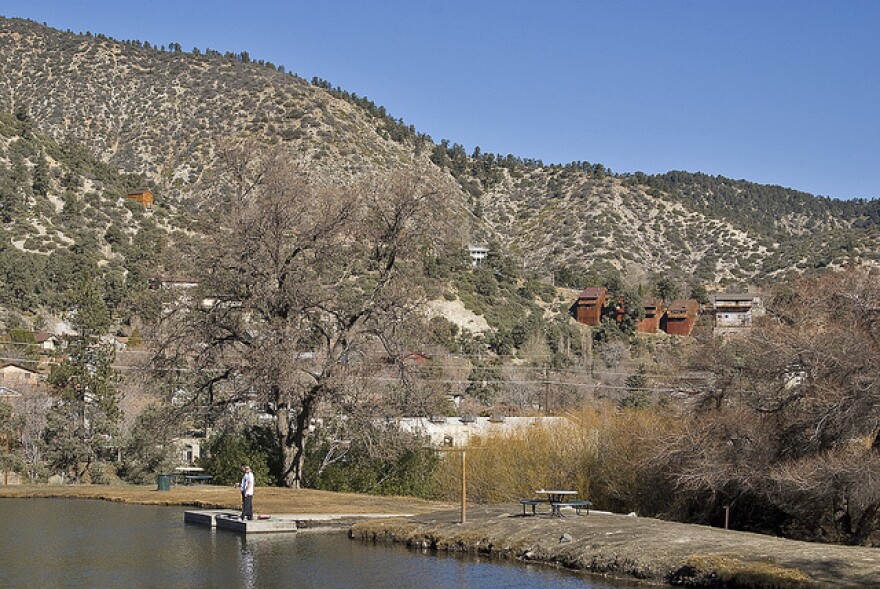Truth matters. Community matters. Your support makes both possible. LAist is one of the few places where news remains independent and free from political and corporate influence. Stand up for truth and for LAist. Make your year-end tax-deductible gift now.
This is an archival story that predates current editorial management.
This archival content was written, edited, and published prior to LAist's acquisition by its current owner, Southern California Public Radio ("SCPR"). Content, such as language choice and subject matter, in archival articles therefore may not align with SCPR's current editorial standards. To learn more about those standards and why we make this distinction, please click here.
Stretch Of San Andreas Near L.A. Is Overdue For Massive Earthquake, Says Study

During the autumn season of last year, we were gripped by a fear of earthquakes after a cluster of temblors hit the Salton Sea. Was the big one on the verge? Seismologist Dr. Lucy Jones did her best to quell our anxiety.
Then, the Presidential election happened, and a lot of other (man-made)tragedies cropped up. Also, we had the rain to contend with. With all this swirling around, we put our quake-obsession on the backburner.
Those fears may be creeping back, however, on the heels of a new study published earlier this week by the U.S. Geological Survey.
The study focused on Frazier Mountain in the Grapevine area, about 50 miles south of Bakersfield. The area, which sits by the San Andreas Fault, had never been studied in great detail before, reports the L.A. Times. What the researchers found was sobering. For one thing, a 7.9 magnitude quake had hit the area in 1857. It ruptured 185 miles of the San Andreas Fault. It was so powerful that it caused soil to liquify; all the way out in Stockton, nearly 300 miles away, trees sank into the ground.
How does this apply to us? Researchers said that a major quake happens in the area once every 100 years on average; it's been 160 years since the 1857 quake. Also, the more the quake is delayed, the more energy is wound up from years and years of friction; meaning we may see an especially big quake when it does happen.
So now we're tossed back into the "We're overdue" story. But there are, indeed, some news to quell your concerns. For one thing, researchers found that the quakes don't happen with strict regularity out there. While the average interval is about 100 years between quakes, they've also found that, in history, there have been major quakes that happened within 186 years of each other, while others had happened 22 apart, according to Tremblor. Which is to say that we may have decades before it actually hits (or, like, it can happen once you've finished reading this write-up). The USGS forecasts a 16% chance that another major quake will happen in the area within 30 years.
Another tidbit to mitigate your anxiety: the 7.9 quake in 1857 was abnormally big—with such a big reservoir of energy released, this may mean a (relatively) smaller quake when the next one strikes.
Certainly, the Grapevine is not as highly populated as other parts in the lower half of California. But there are people out there, and the area is a vital artery. As noted by the Times, a major quake could damage nearby aqueducts, bring down transmission lines, and devastate a big stretch of Interstate 5.
And in case the Big One really does hit at the end of this article, check out this video of Dr. Jones explaining the proper protocol in surviving an earthquake:







